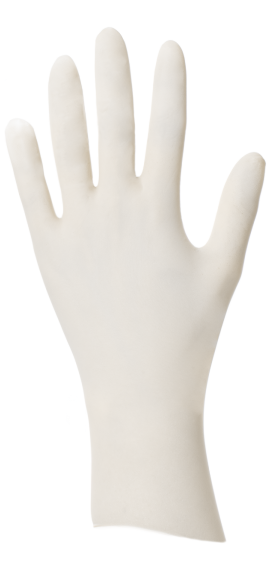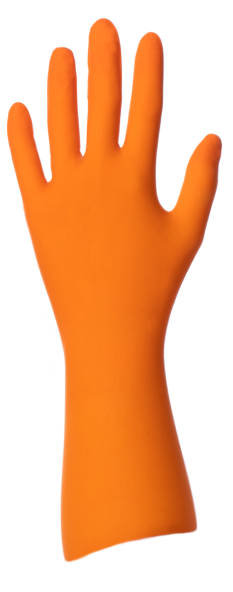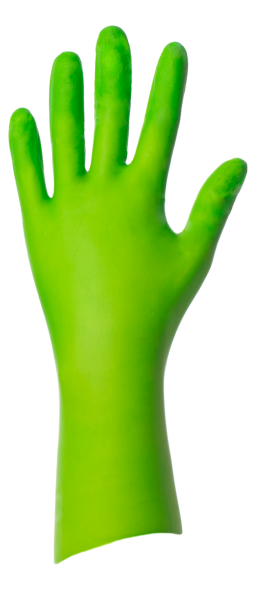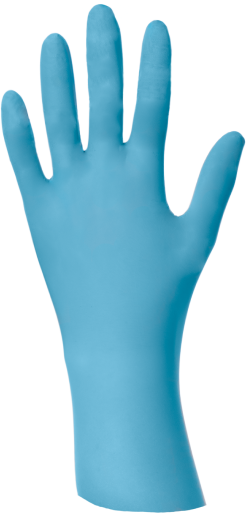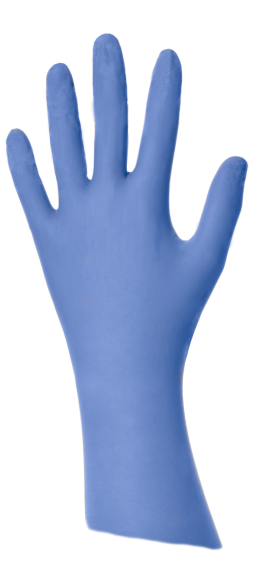General workplace gloves
Whatever their industrial activity, manufacturers are continuously subject to strong constraints to ensure the conformity and quality of their productions.
As employers, they must also identify, reduce, and prevent work-related risks according to their activity and guarantee the safety of their employees implementing individual or collective protection measures (technical, human, and organizational).
DISPOSABLE PROTECTIVE GLOVES: WHEN TO USE IT?
Workers’ hands are particularly and regularly exposed to many risks (injuries or illnesses) in the industrial sector. Employees should therefore wear protective gloves adapted to the industrial activities carried out.
Hazards and risks to which workers are exposed differ from one activity to another. These can be mechanical risks (abrasion, tearing, perforation, cut...) but also chemical risks (burns, exposure to irritating products or even dangerous to health...), biological or microbiological risks (bacteria, viruses, parasites, fungi...), risks related to radiation (UV, radioactivity...) etc.
It is impossible for a PPE glove to meet all the risks. Each identified risk therefore requires appropriate hand protection.
In the manufacturing industry, disposable gloves are also worn for hygienic reasons such as in the food processing (this is not a substitute for regular hand washing) or simply so as not to leave fingerprints on the manufactured product.
INDUSTRIAL ACTIVITIES REQUIRING PROTECTIVE GLOVES
Wearing protective gloves adapted to industrial activities is an imperative to prevent dangers and reduce risks.
Disposable gloves must comply with the regulations on Personal Protective Equipment (PPE) to be used in the sectors of:
- Agriculture and agri-food industry.
- Automotive industry (manufacturing, painting, and maintenance).
- Aerospace industry.
- Chemical industry.
- Micromechanics.
- Machinery and equipment.
- Packaging, Logistic.
- Electronic industry.
- Printing.
- Painting
HOW TO CHOOSE AN INDUSTRIAL PROTECTIVE GLOVE?
The user should choose a protective glove according to the risk faced as well as compatible with the task to be completed.
Depending on the needed dexterity, the desired comfort and the level of protection sought, the thickness of the selected industrial glove will thus be more or less important.
The disposable glove may have a longer or a shorter cuff depending on the risk of chemicals splashing for example.
The glove material chosen, nitrile, latex or nitrile/neoprene will depend on the comfort sought, the resistance to the chemicals used or to reduce the risk of allergy.
SHIELD Scientific provides one of the most comprehensive gloves chemical resistance guides making very easy to quickly see the resistance performance of a glove to a given chemical. This is to help health and safety managers as well as users in their risk assessment and the choice of the most appropriate industrial glove.
Glove sizing is another important criterion as the gloves must adapt as much as possible to the size of the user's hand to be efficient and not hinder him in his tasks.
SHIELD Scientific INDUSTRIAL PROTECTIVE GLOVES
SHIELD Scientific offers a wide range of disposable gloves to meet the expectations of the industrial sector.
SHIELD Scientific single-use gloves are available in different thicknesses (from 0.08 mm to 0.31 mm), lengths (from 24 to 30 cm), materials (Nitrile, Latex, Nitrile/Neoprene) and finishes (Smooth, partially, or completely textured) allowing a wide adaptation to the diversified needs of the industrials.
The SHIELD Scientific Protective online Gloves Selection Guide will help you choose the glove that best suits your needs. For any technical information or sample request, contact us.

